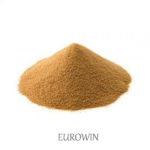Yeast Extract
| CAS Number | 8013-01-2 |
| Image |  |
Type:Flavourings
CAS No:8013-01-2
Qty in 20′ FCL:10MT
Min. Order:500KG
QC:Haccp,Kosher,Halal,Iso
Specification
Item STANDARD
Total nitrogen (on dry) , % 5.50
Amino nitrogen (on dry) , % 2.80
Moisture, % 5.39
NaCl, % 2.53
pH value, (2% solution) 5.71
Aerobic count, cfu/g 100
Coliform , MPN/100g < 30
Salmonella Negative
Details
Yeast Extract is a natural ingredient that is made from yeast, the same yeast that is used in bread, beer and wine. Yeast Extract has a savoury flavour that is comparable to a bouillon, which often makes it a suitable ingredient for savoury products to add and bring out flavours and taste in these products.
Yeast extract is the common name for various forms of processed yeast products made by extracting the cell contents (removing the cell walls); they are used as food additives or flavorings, or as nutrients for bacterial culture media. They are often used to create savory flavors and umami taste sensations, and can be found in a large variety of packaged food including frozen meals, crackers, junk food, gravy, stock and more. Yeast extracts in liquid form can be dried to a light paste or a dry powder. Glutamic acid in yeast extracts is produced from an acid-base fermentation cycle, only found in some yeasts, typically ones bred for use in baking.







